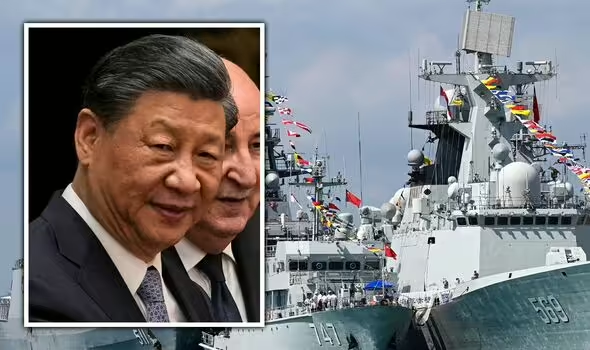|

“My gut tells me we will fight in 2025,” U.S. Air Force Gen. Mike Minihan wrote in a January memo to officers in the Air Mobility Command. The memo, which promptly leaked to reporters, warned that the United States and China were barreling toward a conflict over Taiwan. The U.S. Defense Department quickly distanced itself from Minihan’s blunt assessment. Yet the general wasn’t saying anything in private that military and civilian officials weren’t already saying in public.
In August 2022, a visit to Taiwan by U.S. House Speaker Nancy Pelosi had set off the worst cross-strait crisis in a quarter century. China’s aircraft barreled across the center line of the Taiwan Strait; its ships prowled the waters around the island; its ballistic missiles splashed down in vital shipping lanes. Months after Russia’s full-scale invasion of Ukraine had reminded everyone that major war is not an anachronism, the Taiwan crisis made visceral the prospect that a Chinese attack on that island could trigger conflict between the world’s two top powers.
Washington certainly took note. A year earlier, the outgoing chief of U.S. Indo-Pacific Command, Adm. Philip Davidson, had predicted that a war in the Taiwan Strait could come by 2027. After the August crisis, this “Davidson window” became something like conventional wisdom, with Minihan, Secretary of State Antony Blinken, and other U.S. officials predicting that trouble might start even sooner. If the United States and China do clash over Taiwan, it will be the war everyone saw coming—which would make the failure to deter it all the more painful.
To be sure, U.S. President Joe Biden has made deterring that conflict a priority. Despite the long-standing policy of “strategic ambiguity,” Biden has publicly affirmed, four times, that the United States would come to Taiwan’s aid if it were attacked. Yet deterrence is about more than declaratory policy: It requires assembling a larger structure of constraints that preserve the peace by instilling fear of the outcome and consequences of war. More than a year after the August crisis and nearly three years into the Davidson window, the United States and its friends are struggling to build that structure in the limited time they may have left.
Повний текст за адресою: https://foreignpolicy.com/2023/09/08/us-military-deterrence-china-taiwan-war-east-asia/?utm_source=Sailthru&utm_medium=email&utm_campaign=FP%20This%20Week%20-%2009262023&utm_term=fp_this_week#cookie_message_anchor
|



